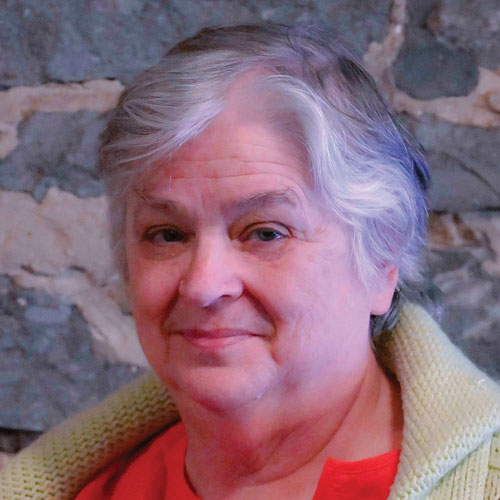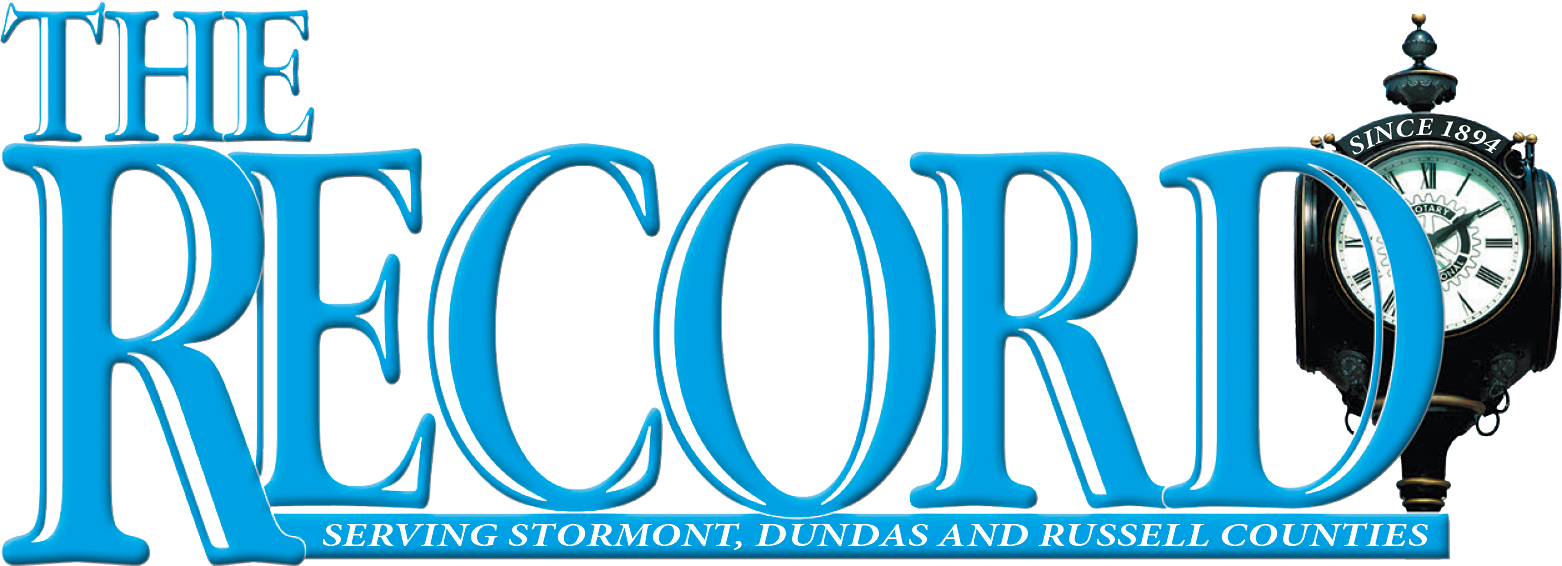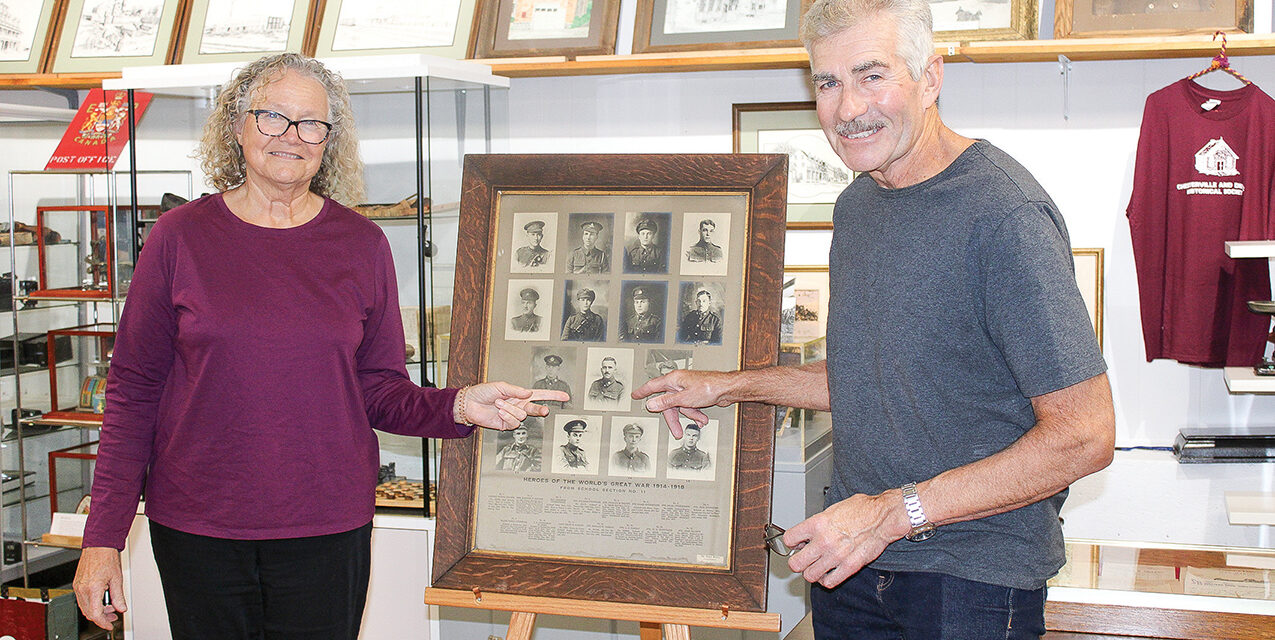From the right: Frank Casselman and his wife Kay, point to a picture of Frank’s father in uniform. The photo display includes soldiers from School Section 11 located at the Heritage Centre in Chesterville during a meeting of the Chesterville and District Historical Society. See page 3 for the full story. Thompson Goddard Photo
CHESTERVILLE – Kay Casselman, accompanied by her husband Frank, was the guest speaker at the Oct. 17 meeting of the Chesterville and District Historical Society. Members and guests listened as Kay presented a unique and interesting view into the life of her father-in-law during the First World War which were gleaned from letters and records found in the attic of their house on the family farm.
The story of James Frank Casselman’s First World War service began in nearby Chesterville when he enlisted on April 11, 1916. He was assigned to the 154th Battalion of the Canadian Expeditionary Force, perpetuated by the Stormont, Dundas, and Glengarry Highlanders, travelled to Camp Barryfield for training before being sent overseas.
In England, the 154th Battalion was disbanded with members assigned to other regiments and he was assigned to the 4th Canadian Mounted Rifles (CMR). During his service in France, Casselman was wounded several times and returned to Canada in late 1918, living on the home farm until his death.
As was the case with many of the soldiers, he wrote letters to his mother as well as other friends and family. In the attic of the Casselman home on the family farm, Kay discovered the letters, paperwork, and other items from her father-in-law’s wartime service. Over the past couple of years, Kay has painstakingly scanned this paperwork and created a book for her husband and the future generation of the family, with a copy of the scanned documents on a flash drive.
During the presentation Frank related how his father, like many veterans, did not speak much about his service during the war, but noted the family attended Remembrance Day services each November 11 in Morewood.
Thanks to Kay’s work and the members of the family who saved and secured the letters, future generations will have access to an important part of their heritage.

Carolyn Thompson Goddard, grew up in Chesterville and attended North Dundas District High School. After completing her BA in Political Science at Carleton University she has worked as a medical secretary and library technician. In 2020 she graduated from Algonquin College with a diploma in Journalism and has been a reporter and column writer for The Chesterville Record for over 10 years.









